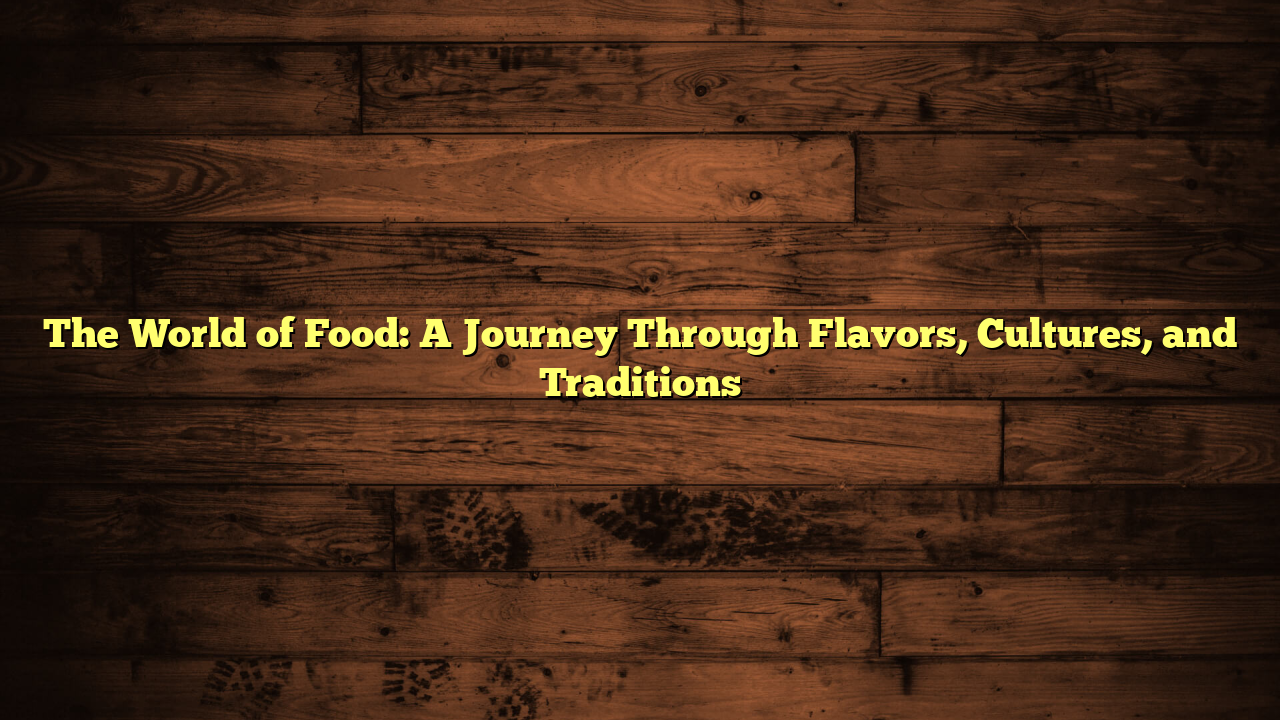Food is an ever-evolving part of human history. From ancient civilizations to modern dining trends, the way we eat, cook, and share meals has transformed dramatically. Global cuisine is shaped by migration, trade, technological advancements, and cultural exchanges. While some traditional dishes remain unchanged, many have been adapted and influenced by new ingredients, cooking techniques, and consumer preferences.
In this article, we will explore how food has evolved over time, from ancient diets to modern fusion cuisine, and what this means for the future of global gastronomy.
Ancient Diets: A Glimpse into the Past
Before the development of agriculture, early humans relied on hunting, fishing, and gathering for sustenance. The diet of prehistoric humans varied depending on geography and available resources. For example:
● Hunter-gatherers in Africa consumed nuts, seeds, berries, and hunted animals.
● Coastal communities relied on seafood, seaweed, and saltwater plants.
● Nomadic tribes ate wild grains, roots, and game meat.
With the rise of agriculture around 10,000 years ago, food became more stable, leading to the cultivation of staple crops such as wheat, rice, corn, and barley. Early civilizations like the Egyptians, Mesopotamians, and Chinese developed bread, beer, and fermented foods, laying the foundation for modern gastronomy.
The Influence of Trade and Exploration
As civilizations expanded, trade routes such as the Silk Road and Spice Trade played a major role in the evolution of global cuisine. Some key examples include:
● Spices from India (cinnamon, cardamom, turmeric) were introduced to Europe.
● Tomatoes, potatoes, and chili peppers from the Americas became staples in European, Asian, and African diets.
● Sugar from the Caribbean revolutionized dessert-making in Europe.
Colonization further accelerated the exchange of ingredients. The introduction of coffee, chocolate, and vanilla into European markets shaped modern desserts and beverages.
The Industrial Revolution and Processed Foods
The Industrial Revolution (18th–19th century) changed the way people produced and consumed food. Innovations such as refrigeration, canning, and milling led to mass food production. While this made food more accessible, it also resulted in the rise of processed and refined products.
By the 20th century, convenience foods such as canned soup, frozen meals, and fast food became widely available, shifting eating habits away from traditional home-cooked meals. The development of artificial preservatives and additives extended the shelf life of food but also raised concerns about nutrition and health.
The Rise of Fast Food and Globalization
The post-World War II era saw the global expansion of fast food chains, particularly from the United States. toto slot like McDonald’s, KFC, and Burger King spread across the world, adapting their menus to local tastes. For example:
● McDonald’s introduced Teriyaki Burgers in Japan and McAloo Tikki in India.
● KFC became popular in China, offering spiced chicken tailored to Chinese flavors.
● Pizza, originally Italian, evolved into American-style deep-dish and New York thin crust.
While fast food provided affordability and convenience, it also contributed to health concerns, including obesity and heart disease. As a result, many countries began promoting healthier eating habits and traditional cuisine.
The Age of Fusion Cuisine and Culinary Innovation
In recent decades, fusion cuisine has become a major trend, blending flavors and techniques from different cultures. This has led to creative and unexpected combinations, such as:
● Sushi burritos (Japanese + Mexican)
● Kimchi tacos (Korean + Mexican)
● Pasta with curry sauce (Italian + Indian)
Additionally, molecular gastronomy—using scientific techniques to manipulate food textures and flavors—has emerged in fine dining. Chefs like Ferran Adrià and Heston Blumenthal have revolutionized food presentation with techniques such as foams, liquid nitrogen, and edible spheres.
The Future of Global Cuisine: Sustainability and Ethical Eating
As concerns about climate change, food security, and health grow, the future of global cuisine is shifting toward sustainability. Key trends include:
1. Plant-Based and Alternative Proteins
● The popularity of vegetarian and vegan diets is increasing.
● Companies are developing lab-grown meat and plant-based alternatives like Beyond Meat and Impossible Burger.
2. Farm-to-Table and Organic Foods
● Consumers prefer locally sourced, organic, and non-GMO foods.
● Restaurants and supermarkets emphasize seasonal produce to reduce carbon footprints.
3. Reducing Food Waste
● Innovations in upcycled food products (e.g., repurposing vegetable scraps into new meals).
● Initiatives like “ugly produce” campaigns encourage using imperfect fruits and vegetables.
Conclusion
The evolution of global cuisine is a testament to human creativity and adaptability. From ancient diets to the industrialization of food, every era has shaped the way we eat today. While globalization has introduced new flavors and techniques, there is also a renewed focus on sustainability and traditional cooking.
As we move forward, the challenge will be to balance innovation with cultural heritage, convenience with health, and global accessibility with sustainability. Whether through a bowl of ramen, a plate of pasta, or a street taco, food will continue to connect people, preserve traditions, and inspire new culinary experiences for generations to come.


